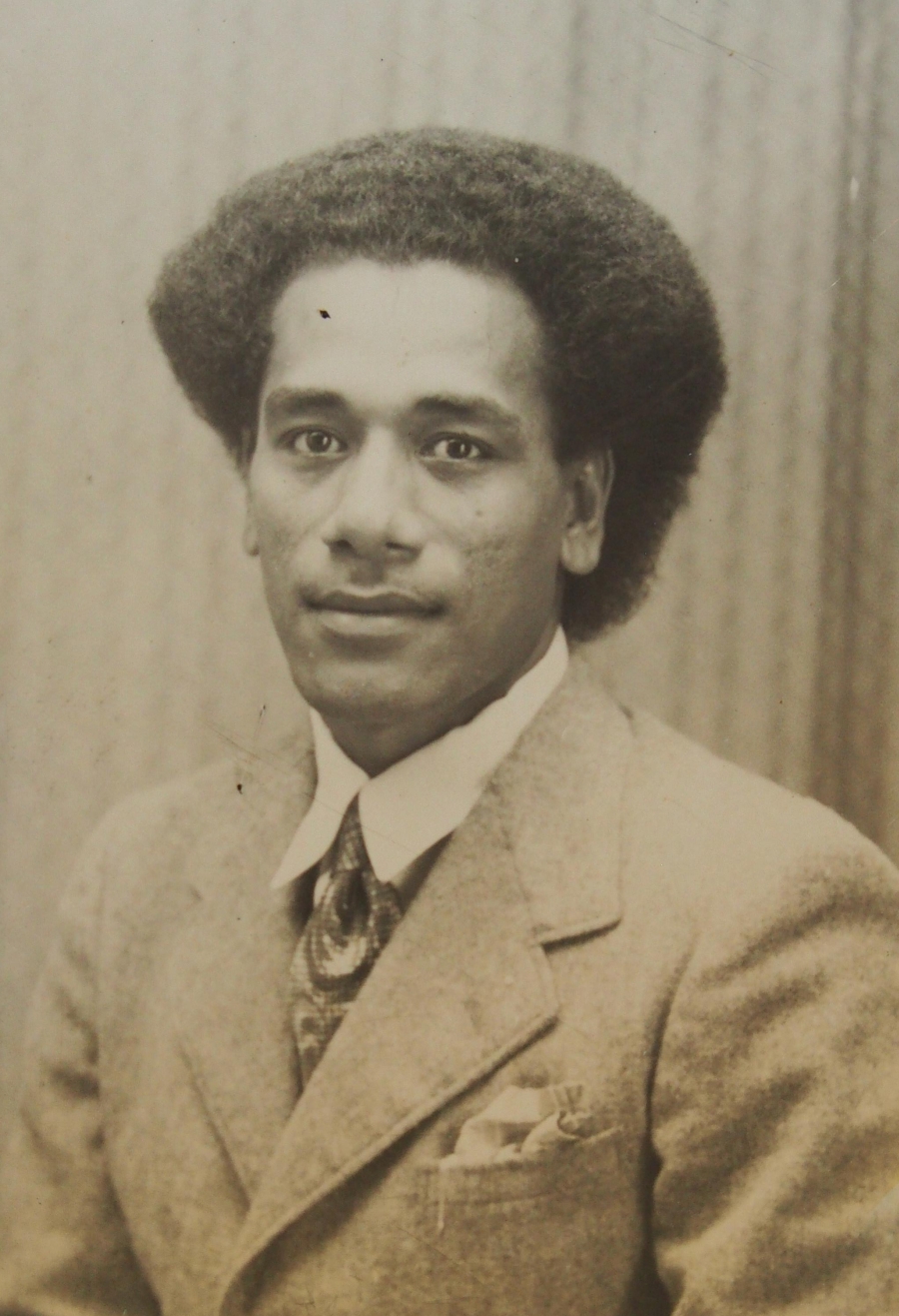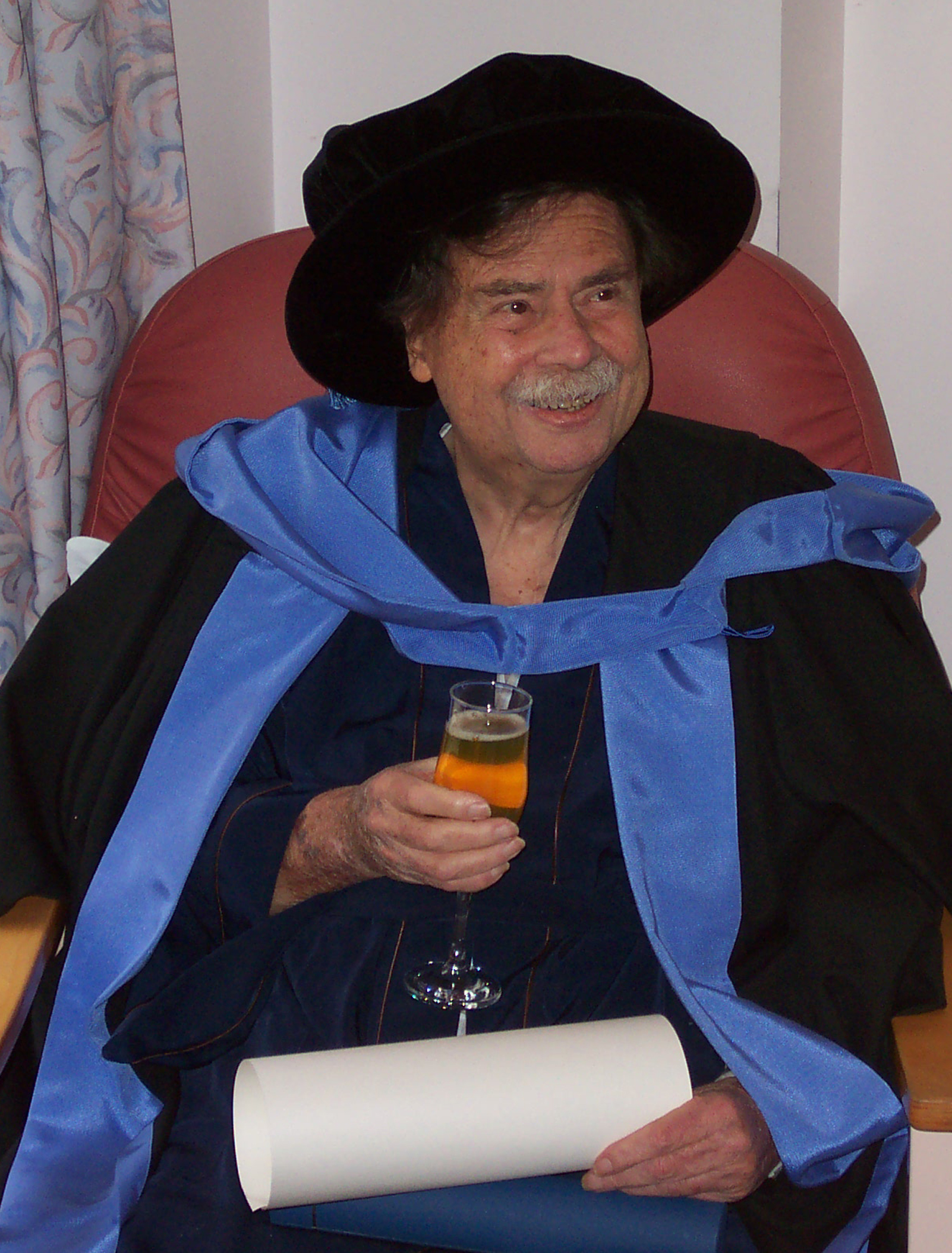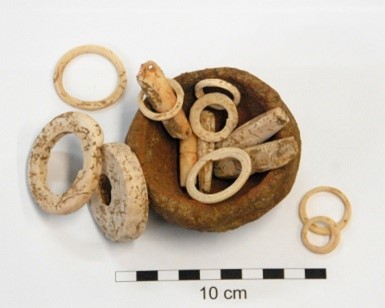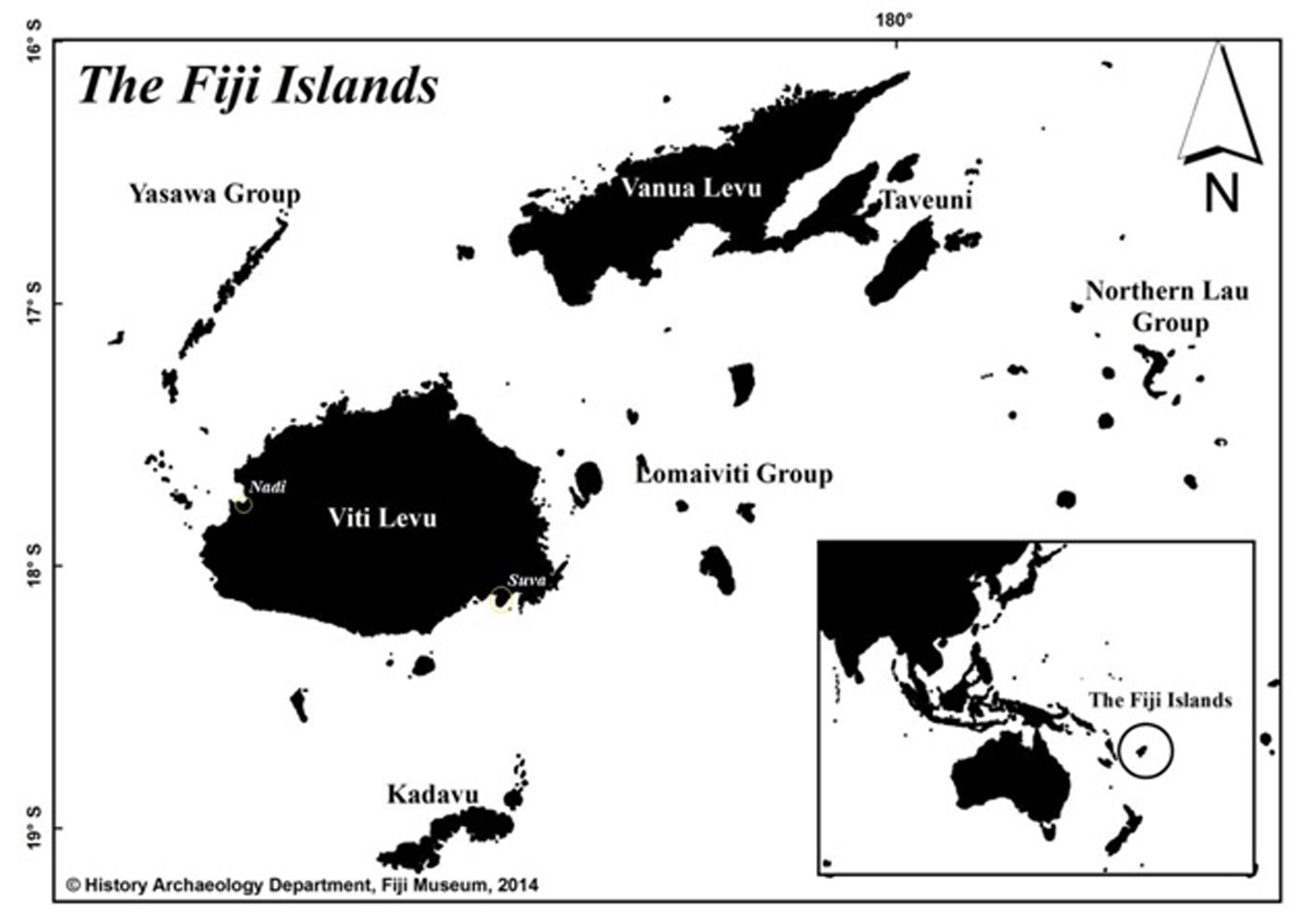Background
The Lapita International Conference, held every three to four years, is a major gathering of Pacific archaeological specialists, including many indigenous Pacific Islanders involved in museums and other institutions.
Lapita is the foundation culture for the Pacific beyond the main Solomon Islands, including Vanuatu, New Caledonia, Fiji, Tonga and Samoa. The culture first arose in the Bismarck Archipelago to the east of New Guinea sometime before 3000 years ago and then spread rapidly out as far as Western Polynesia, and is assumed to be associated with the spread of Austronesian languages and the first settlement of Polynesia. Lapita developed out of the Island Southeast Asian Neolithic cultures. The conference has been held in various countries in the Pacific where Lapita has been found across the region from New Guinea to Samoa.
The Lapita Conference series began in 1988 with the Lapita Design Workshop held at the ANU as part of the Research School of Pacific Studies’ Austronesian Project. The second was held in Noumea, New Caledonia in 1992. This established the pattern of holding the conferences in countries and territories where the traces of the Lapita culture have been found, the majority of these being MSG members. The next conference was in Port Vila, Vanuatu in 1996, while the fourth was planned for Fiji in 2000 but had to be shifted to the ANU, Canberra at the last moment because of a military coup in the host nation. The next was in Nukualofa, Tonga in 2005. The extended gap was because of the stand-alone 2002 International Conference for the 50th Anniversary of the First Lapita Excavation held in Kone and Noumea, particularly memorable for the presence of Dick Shutler, one of the original excavators (with E.W. Gifford) of the eponymous site of Lapita in 1952. The sixth of the Lapita Conference series was held in Honiara, Solomon Islands, in 2008 and the seventh in Apia, Samoa in 2011.
The decision was made at that conference to return to Port Vila for the Eighth Lapita Conference because of the extremely significant findings made during the excavation of the Teouma Lapita Cemetery site on Efate Island, Vanuatu from 2004-2010, allowing the examination ‘on site’ as it were of the Lapita pottery and associated artefacts held at the Vanuatu National Museum in Port Vila. The Ninth Lapita Conference was held in Port Moresby, Papua New Guinea in 2019 where there was a push for Fiji to host the next international Lapita Conference.
Fiji
The Republic of the Fiji Islands encompasses a group of over 300 volcanic island landmasses, of which over 100 islands are inhabited. Fiji is located in the tropics of the southern hemisphere and has a total land area of approximately 18,300km2 that covers the region positioned between a latitude of 12N-21°S and longitude 176°E-178°W (Fig. 1). Fiji has two main islands namely, Viti Levu and Vanua Levu and approximately 80% of the population resides on these two islands the majority of which is located in rural areas and about 40% of the people dwelling in urban areas. 83% percent of land is owned by indigenous Fijians while nine percent is State owned and eight percent is Freehold land (Ministry of Information, Communications and Media Relations, 2006).
Archaeological Research in Fiji
 The pioneers of archaeological research in Fiji were carried out by two members of the Fijian Administration that was set up in 1944 by the efforts of Ratu Sir Lala Sukuna and wartime Governor of Fiji, Sir Philip Mitchell (Spriggs, Uncovering Pacific Pasts).
The pioneers of archaeological research in Fiji were carried out by two members of the Fijian Administration that was set up in 1944 by the efforts of Ratu Sir Lala Sukuna and wartime Governor of Fiji, Sir Philip Mitchell (Spriggs, Uncovering Pacific Pasts).
In 1947, the Fijian Administration seconded Ratu Rabici Vuikadavu Logavatu (1924-2005) to assist in the archaeological expedition of Edward Winslow Gifford (1887-1959) from the University of California, Berkeley, USA (Spriggs, Uncovering Pacific Pasts).
Ratu Rabici was Ratu Sukuna’s personal choice for the role of ‘minder’. In addition to being Gifford’s assistant, he was the ‘eyes and ears’ of the Fijian Administration, helping to resolve difficulties and misunderstandings with the local community and to ensure that Gifford’s work does not adversely affect the iTaukei population (Spriggs, Uncovering Pacific Pasts).
 Two notable excavations by Ratu Rabici and Gifford are Navatu and Vuda. In addition, Ratu Rabici and Lindsay Verrier found the first Lapita pottery in Fiji at the Sigatoka sand dunes. The find was later to prove crucial in working out the distribution of this widespread pottery style and inspired significant series of excavations at the dunes around the 60s to the 2000s (Spriggs, Uncovering Pacific Pasts).
Two notable excavations by Ratu Rabici and Gifford are Navatu and Vuda. In addition, Ratu Rabici and Lindsay Verrier found the first Lapita pottery in Fiji at the Sigatoka sand dunes. The find was later to prove crucial in working out the distribution of this widespread pottery style and inspired significant series of excavations at the dunes around the 60s to the 2000s (Spriggs, Uncovering Pacific Pasts).
The second archaeological pioneer was Aubrey Park (1925-2007), who was appointed to the British Colonial Services and posted to Fiji in 1951 as an Administrator Officer. During his 20 years in Fiji, he held many positions in the Fijian and Colonial Administrations. He served for a time as Deputy Talai (Deputy Secretary for Fiji Affairs) in the mid-1960s and later as Commissioner for the Northern District. Interested in archaeology from a young age in Dorset, he was trained in archaeological techniques by Sir Mortimer Wheeler before World War II and later by Stuart Piggot, two of the leading archaeologists of their generation. Although he was an honorary ethnologist and was sometimes on the board of directors of the Fiji Museum, he never held an official position as an archaeologist in Fiji. In fact, when he arrived in Fiji in 1951, he was the most trained archaeologist in the Western Pacific. He pursued archaeological interest in Fiji and Rotuma during weekends and holidays during his stay in Fiji, mapping many sites and excavating several of them. Ratu Rabici was active in the field of archaeology only from his 1947 to his 1950, while Park was active for much longer, including his return visit to Fiji after independence in 1970 (Spriggs, Uncovering Pacific Pasts).
Many archaeologists have conducted extensive research on Lapita in Fiji. The excavation of the Sigatoka Dunes by Birks in 1973, for example, has produced many discoveries that have made the dunes one of the most famous archaeological sites in the Pacific.
Other archaeologists have found Lapita occupations on Kadavu Island, including the Lau Islands, Bega Island, Lomaiviti Islands, Yasawa Islands, Mamanucas, Viti Levu and Vanua Levu.
 In 2003, a major discovery of the oldest Lapita settlement along the coast of Bourewa, southwest of Viti Levu, was probably founded on the offshore island in 1220 BC. (Nunn, 2004). Finds include intricate dentate stamped motifs, thick midden of shells, human skeletal remains, and an amazing clay jewellery box filled with ancient shell monuments (and three large conical shells).
In 2003, a major discovery of the oldest Lapita settlement along the coast of Bourewa, southwest of Viti Levu, was probably founded on the offshore island in 1220 BC. (Nunn, 2004). Finds include intricate dentate stamped motifs, thick midden of shells, human skeletal remains, and an amazing clay jewellery box filled with ancient shell monuments (and three large conical shells).
 On the island of Moturiki, between Ovalau and eastern Viti Levu, a research team from the Fiji Museum and the University of the South Pacific found one of Fiji’s earliest human settlements in June-July 2002. Located in the south of the island at a place called Naitabale, the ancient settlement (Naturuku) was established about 900 BC (more than 2900 years ago) in the lee of a sandy beach at the mouth of the Mataloaloa River.
On the island of Moturiki, between Ovalau and eastern Viti Levu, a research team from the Fiji Museum and the University of the South Pacific found one of Fiji’s earliest human settlements in June-July 2002. Located in the south of the island at a place called Naitabale, the ancient settlement (Naturuku) was established about 900 BC (more than 2900 years ago) in the lee of a sandy beach at the mouth of the Mataloaloa River.
Excavations by the researchers at Naitabale found numerous pieces of Lapita pottery, some of which were decorated in characteristic dentate designs (Photo 1)
 The most incredible discovery at Naitabale was that of a complete skeleton of a woman in one of the pits (Photo 2). Named Mana by her discoverer (Chris Suri from USP), we know from radiocarbon dating that she lived sometime between 650 and 750 BC (more than 2700 years ago) and died between the age of 40 and 60. Mana had clearly been deliberately buried in the sand at Naitabale, at least one metre deep. From the position of her skull, it seems that her head had been unable to lie flat (Photo 3), perhaps because she had been buried with a large head-dress, something that might mean she was a woman of chiefly status.
The most incredible discovery at Naitabale was that of a complete skeleton of a woman in one of the pits (Photo 2). Named Mana by her discoverer (Chris Suri from USP), we know from radiocarbon dating that she lived sometime between 650 and 750 BC (more than 2700 years ago) and died between the age of 40 and 60. Mana had clearly been deliberately buried in the sand at Naitabale, at least one metre deep. From the position of her skull, it seems that her head had been unable to lie flat (Photo 3), perhaps because she had been buried with a large head-dress, something that might mean she was a woman of chiefly status.
 With the permission of local people, the skeleton of Mana was carefully removed from her ancient grave in July 2002 and her remains analysed so that we might learn about how she had lived (Photo 4). Mana’s remains were returned to Naitabale in 2004 and formally reburied at the site.
With the permission of local people, the skeleton of Mana was carefully removed from her ancient grave in July 2002 and her remains analysed so that we might learn about how she had lived (Photo 4). Mana’s remains were returned to Naitabale in 2004 and formally reburied at the site.
One of the most remarkable things about the Mana skeleton was the excellent state of preservation of her skull. So well was this preserved that it proved possible to reconstruct her head in some detail. The face you see here is an accurate representation of how Mana would have looked. The only thing that is impossible to know for certain is her hair – in this model, scientists have given Mana the hair that seems to best match her features.

